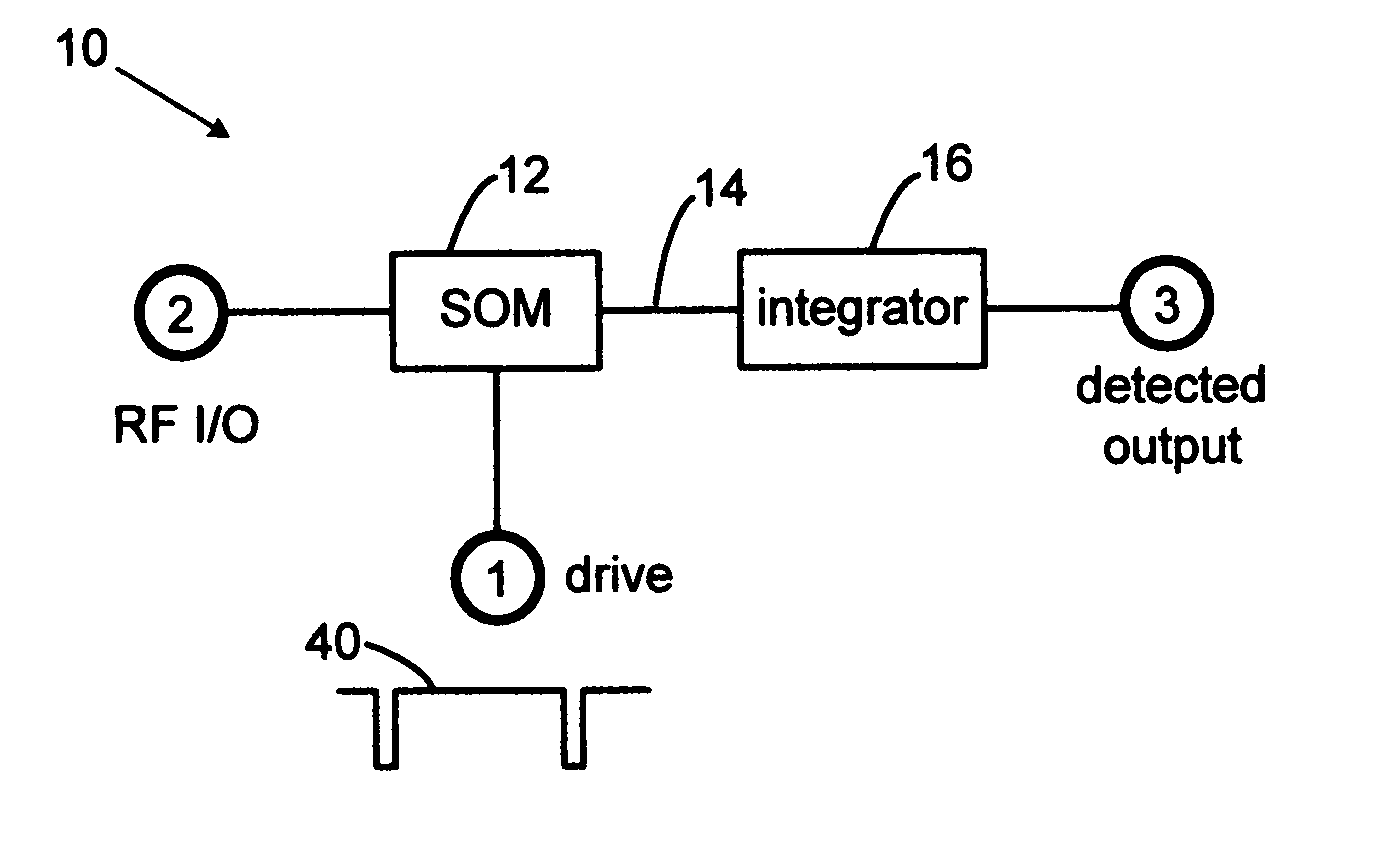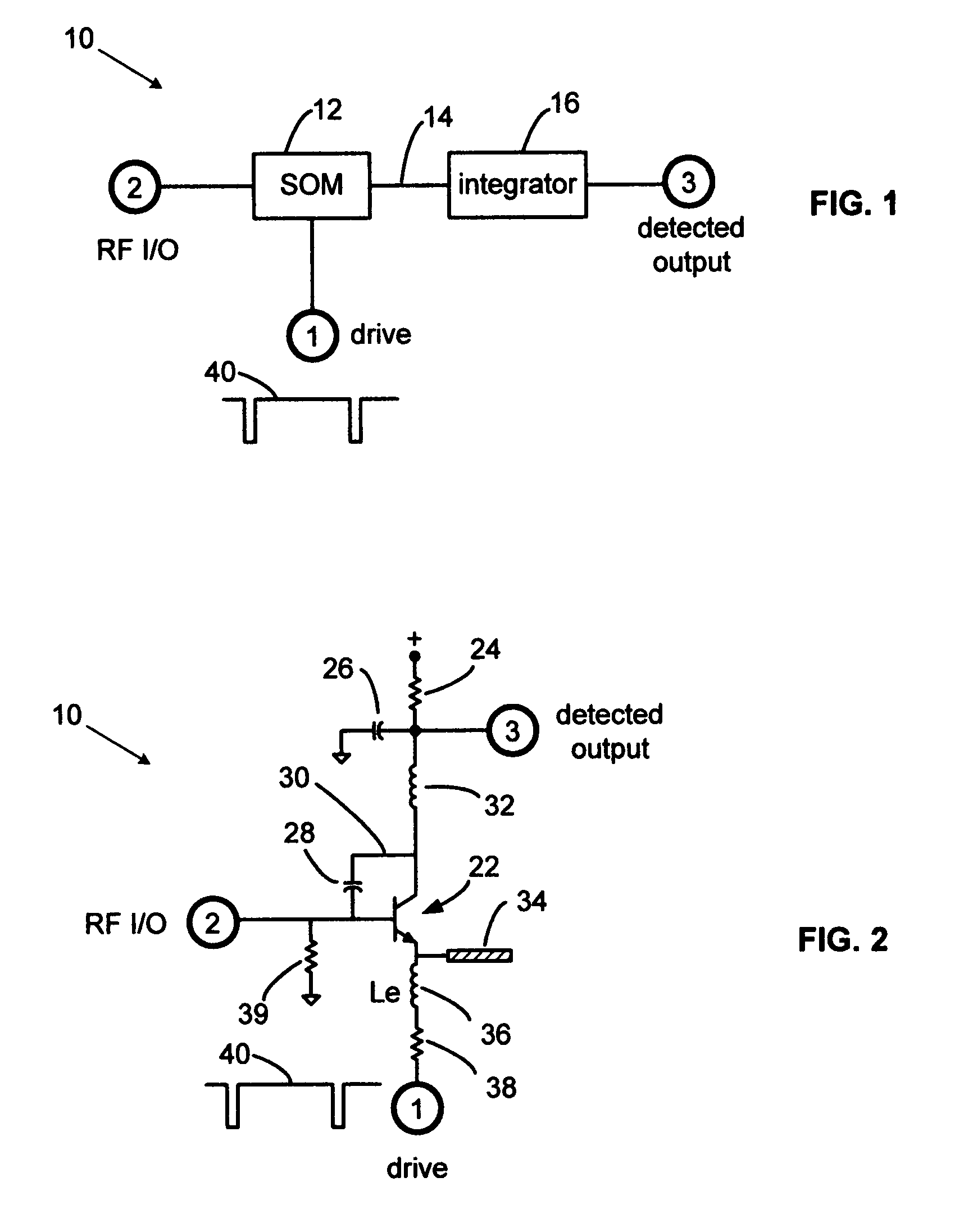Self-oscillating UWB emitter-detector
a self-oscillating, emitter-detector technology, applied in the field of radar detection circuits, can solve the problems of excessive bandwidth, too large bandwidth for some applications, impulse-type samplers, etc., and achieve the effect of low noise and low level of local oscillator leakag
- Summary
- Abstract
- Description
- Claims
- Application Information
AI Technical Summary
Benefits of technology
Problems solved by technology
Method used
Image
Examples
Embodiment Construction
[0024]A detailed description of the present invention is provided below with reference to the figures. White illustrative component values and circuit parameters are given, other embodiments can be constructed with other component values and circuit parameters.
General Description
[0025]The present invention overcomes the limitations of the various prior UWB sampling receivers by employing a self-oscillating mixer (SOM) as a matched bandwidth coherent UWB pulse sampler, and by coupling the SOM to an integrator to produce a detected output. The acronym “UWB” is shorthand notation and refers to both a historical definition of ultra-wideband: any signal having a bandwidth of greater than 1 MHz; and to a modern definition of UWB: a signal bandwidth of greater than 25% of its center frequency. Although the claimed apparatus can operate with multi-GHz UWB RF signals, it can also operate with narrowband signals of less than 1 MHz.
[0026]The self-oscillating UWB emitter-detector operates by mi...
PUM
 Login to View More
Login to View More Abstract
Description
Claims
Application Information
 Login to View More
Login to View More - R&D
- Intellectual Property
- Life Sciences
- Materials
- Tech Scout
- Unparalleled Data Quality
- Higher Quality Content
- 60% Fewer Hallucinations
Browse by: Latest US Patents, China's latest patents, Technical Efficacy Thesaurus, Application Domain, Technology Topic, Popular Technical Reports.
© 2025 PatSnap. All rights reserved.Legal|Privacy policy|Modern Slavery Act Transparency Statement|Sitemap|About US| Contact US: help@patsnap.com



